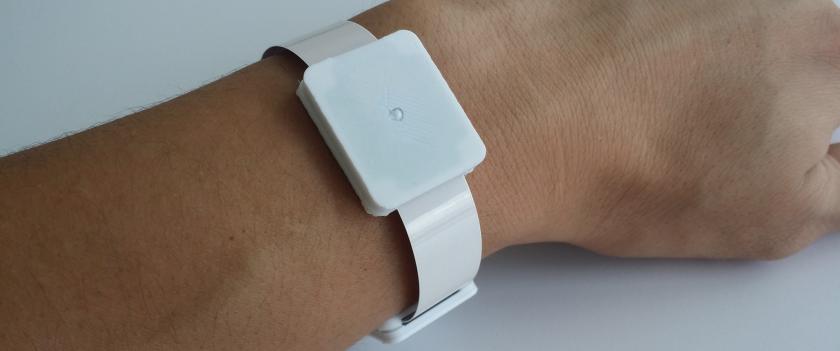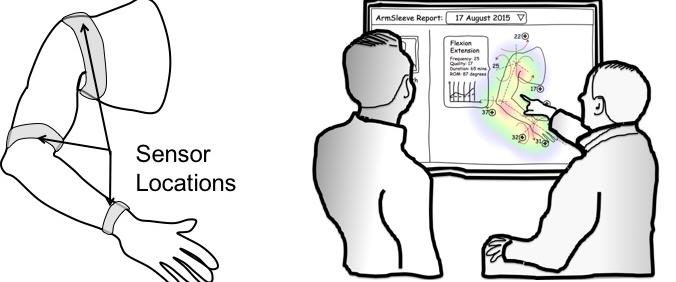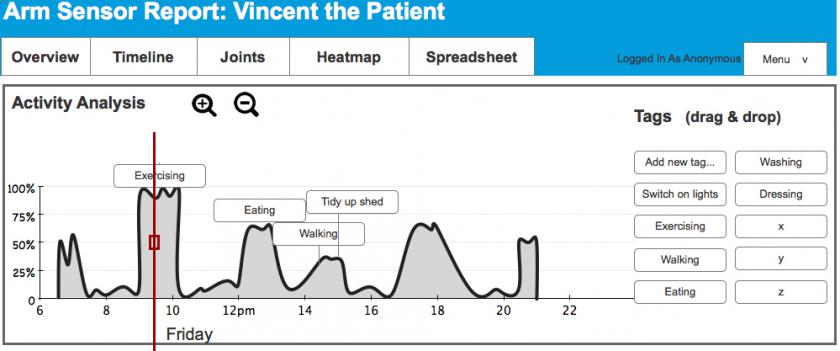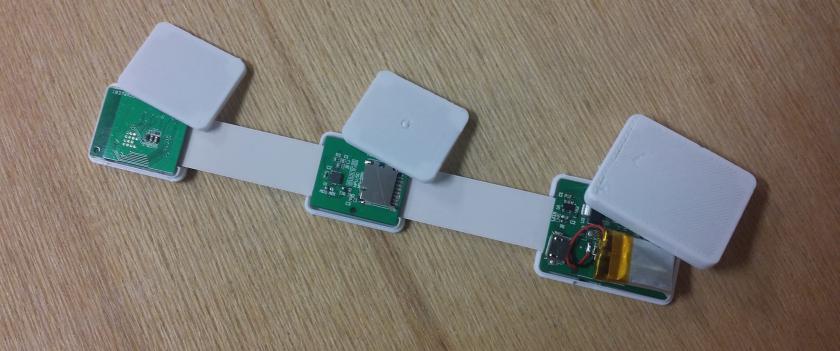Summary
This work describes the design of “ArmSleeve”, a patient monitoring system to support occupational therapists in their upper limb rehabilitation work with stroke patients. Occupational therapists can provide rehabilitation in clinics, but they have limited insights into how much their patients use their affected arm and hand in daily life, which is critical for effective recovery to occur. Our work addresses this problem through three interrelated studies: (1) interviews with therapists to examine their current rehabilitation practices; (2) the design of the “ArmSleeve Sensor” to monitor a patient’s upper limb movement; and (3) the design and evaluation of the “ArmSleeve Dashboard” to visualize this information for therapists. The findings show the importance of collecting objective data to assess exercise and activities outside therapy, but also a lack of contextual information to interpret this data.
Publications
ArmSleeve. Ploderer, Fong, Withana, Klaic, Nair, Crocher, Vetere, and Nanayakkara, (2016). In DIS '16. (pp. 700-711).



